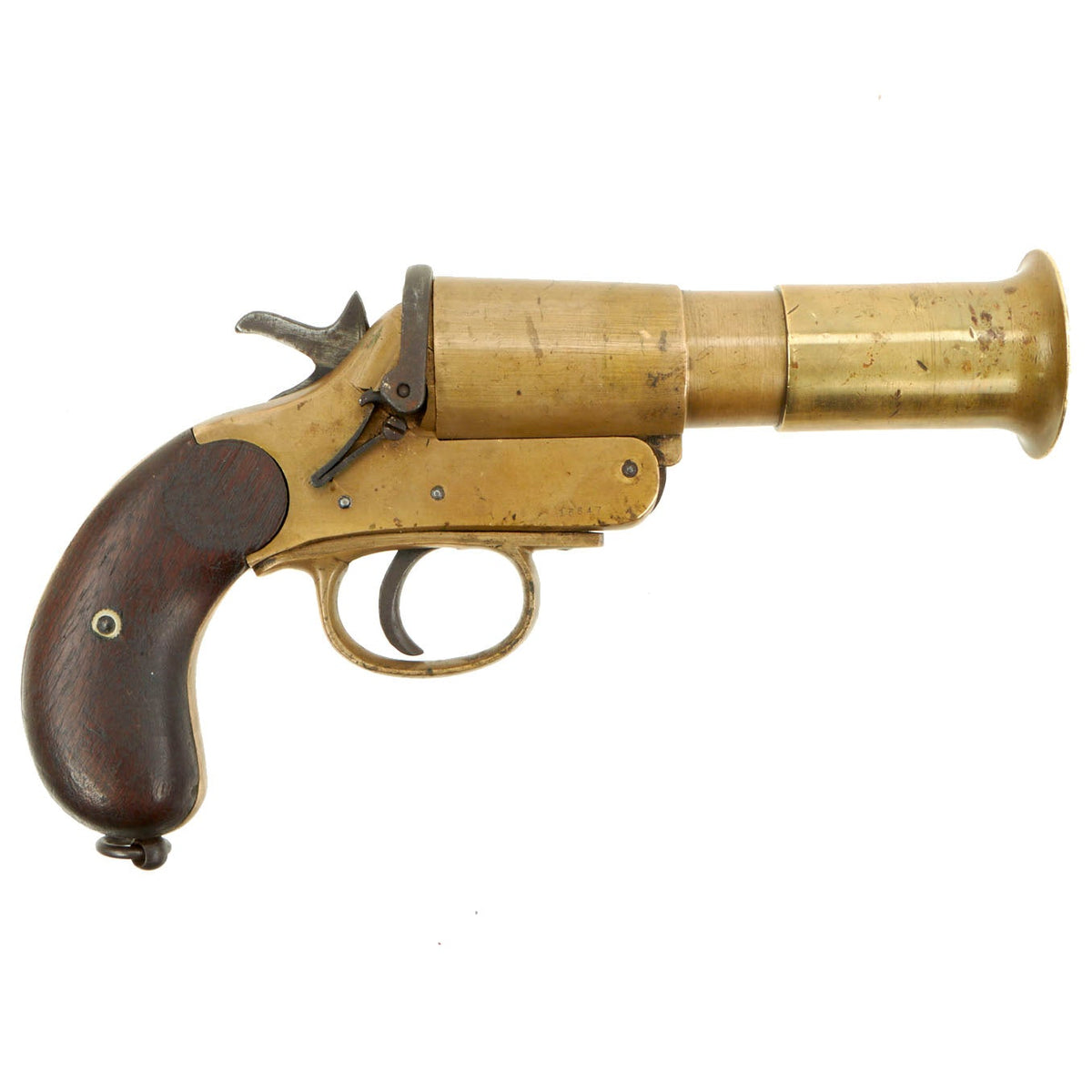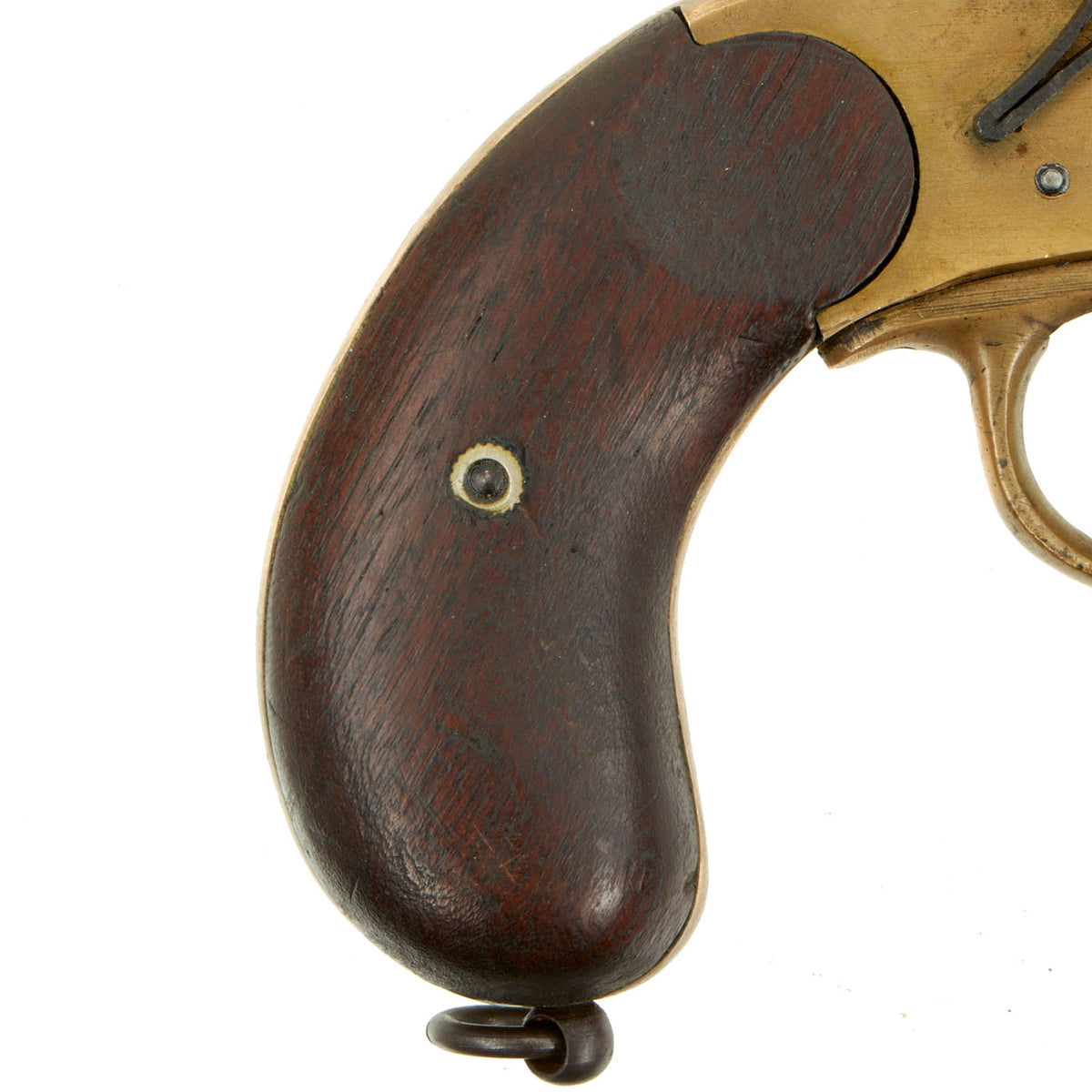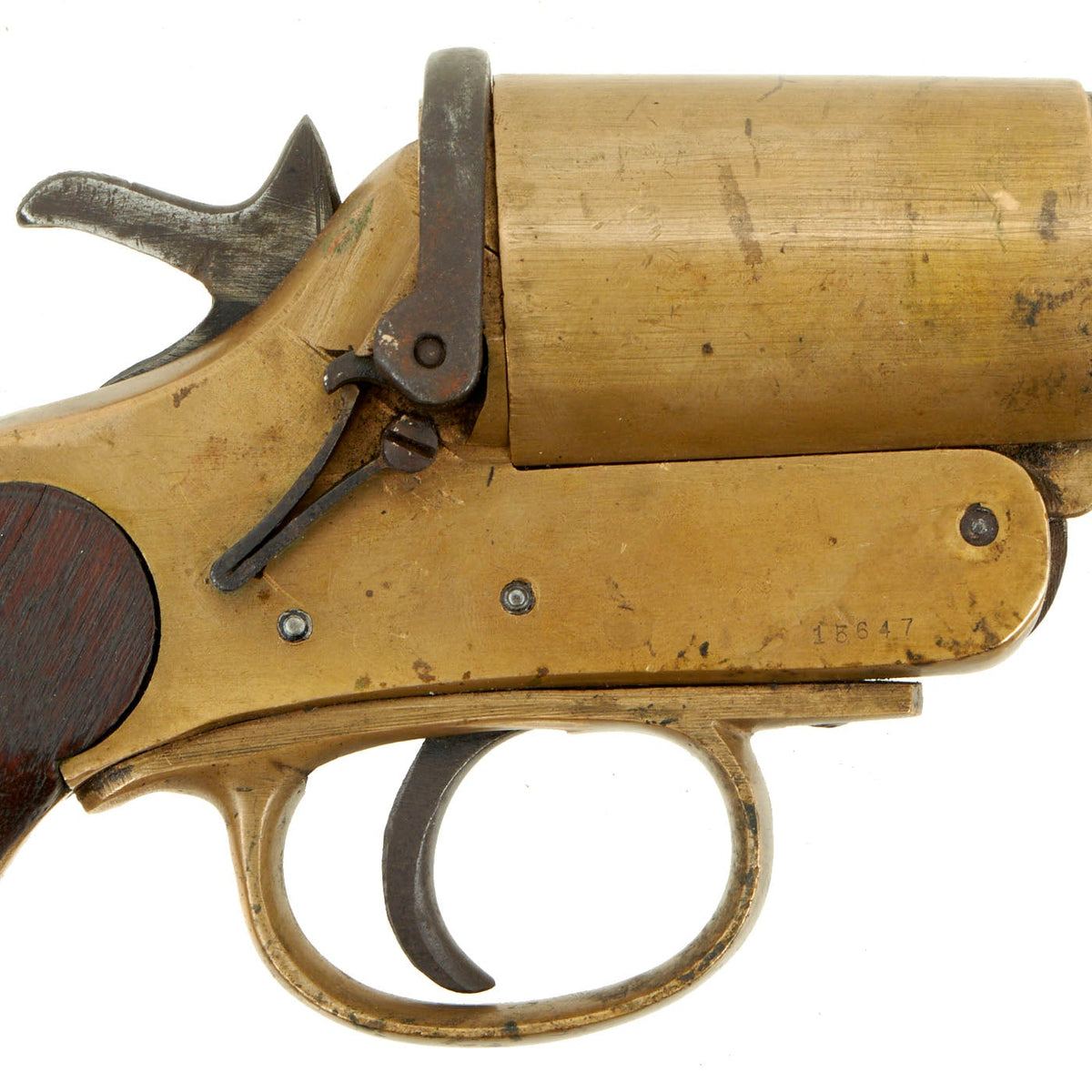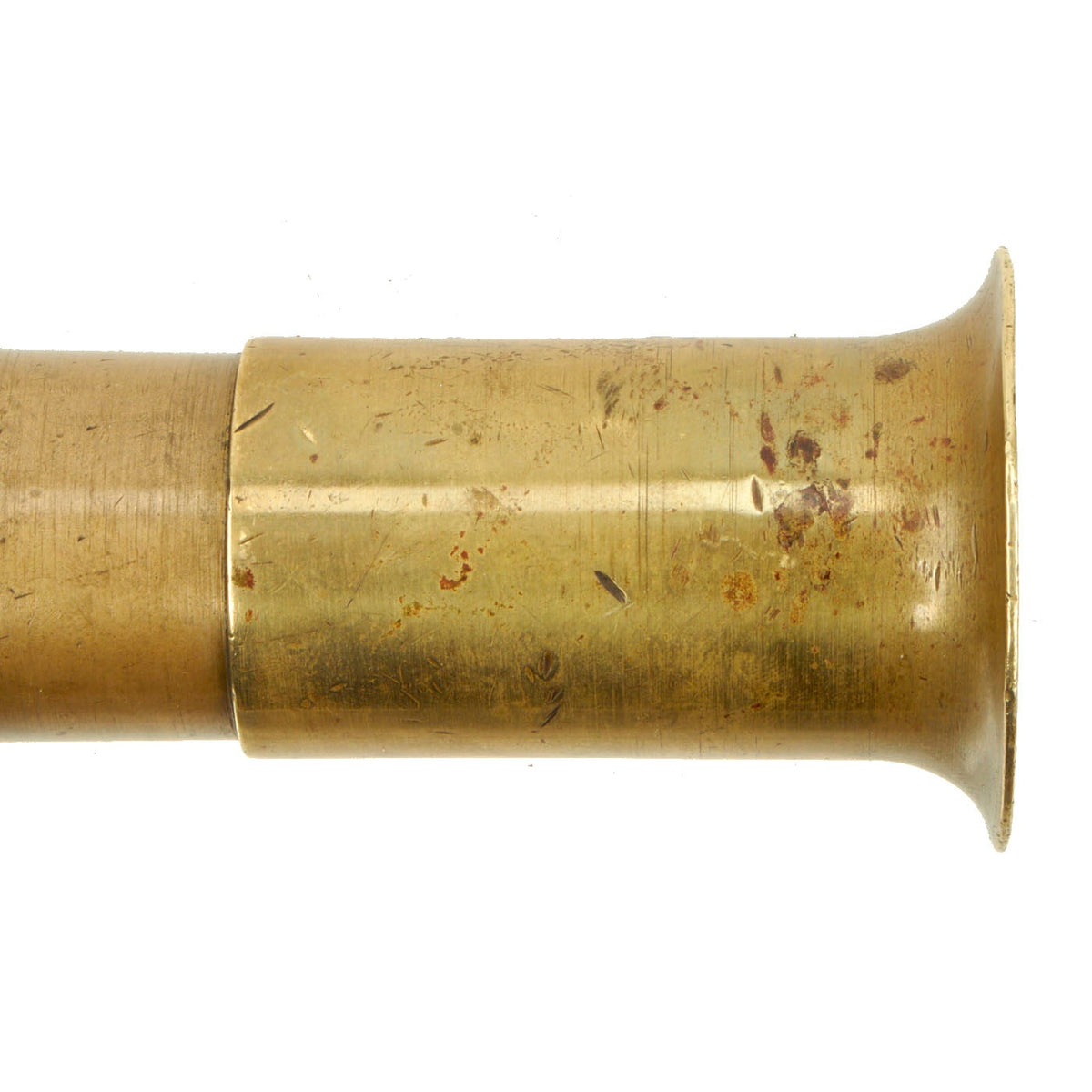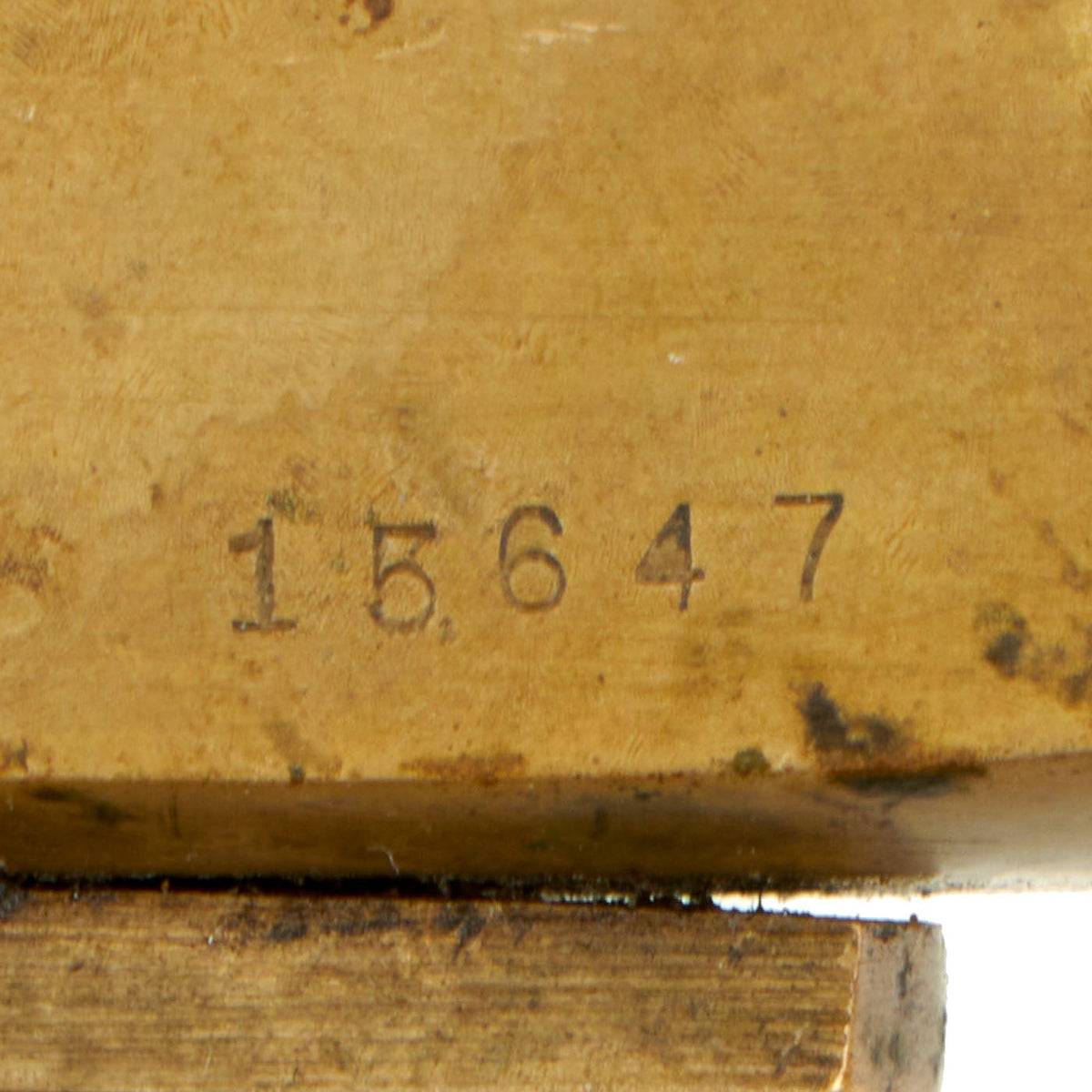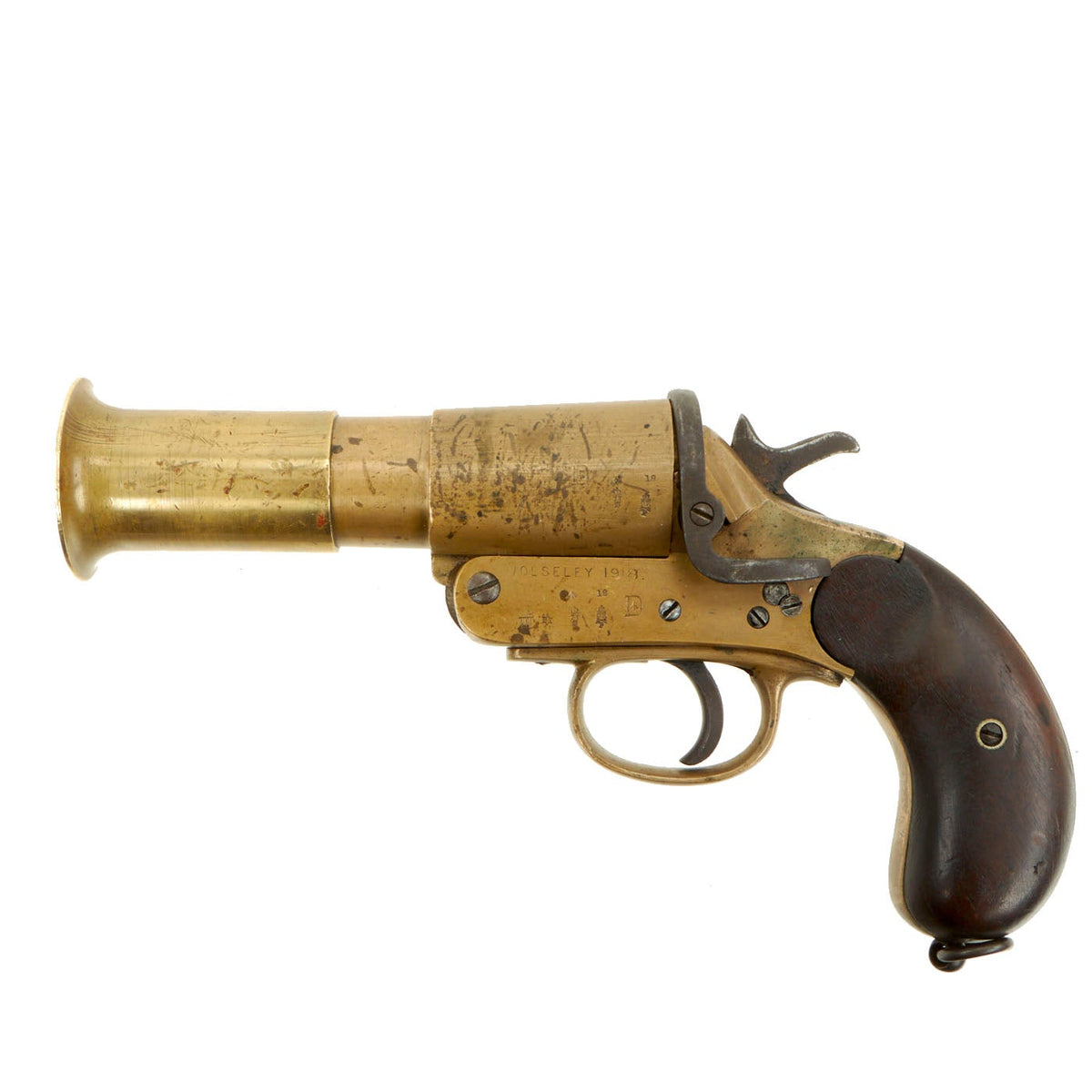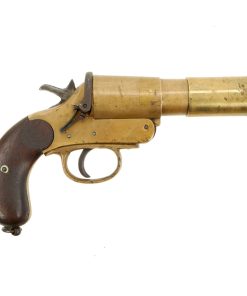Original British WWI & WWII 1918-Dated MkIII* Wolseley Brass Flare Gun – Serial 15647 Original Items
$ 550,00 $ 165,00
Original Item: Only one available. This is a very nice Great War-produced example of the English military Mark III* flare pistol, as issued and used during the last part of World War I. This particular pistol was upgraded to III* during the interwar period, when it was still in service, and was probably still in use during WWII.
The Mark III signal pistol was adopted in 1911, as an improved version of the earlier Mark II pistol, which had been adopted in 1905. Like the previous Mk II pistol, it was a brass flare gun with a tilt-down, break open loading mechanism and a single action lockwork. Although the Mark III remained in production through the end of World War I, it had in fact been superseded by the Number 1 and Number 2 signal pistols which were manufactured from steel instead of brass. These patterns were adopted in 1915 and utilized many of the same parts as the Webley Mark VI service revolver. During the production of the Mk III signal pistol, at least five companies including WW Greener, Wolseley, Chubb (very rare – only 500 contracted for), Cogswell & Harrison and Webley & Scott.
This particular Mark III* signal pistol was produced by Wolseley Motors for the British military, and was upgraded with the flared muzzle attachment, which is why it has the star stamped next to the mark number.
Wolseley Motors Limited was a British motor vehicle manufacturer founded in early 1901 by the Vickers armaments combine in conjunction with Herbert Austin. It initially made a full range, topped by large luxury cars, and dominated the market in the Edwardian era.
The flare gun has many clear proof marks and stamps visible. The serial number on this MkIII is 15647 and can be found on the right side of the receiver. On the left side WOLSELEY 1918 can be found along with the other proofs and stamps.
This example is offered in excellent condition.
Entering wartime as Britain’s largest car manufacturer Wolseley initially contracted to provide cars for staff officers and ambulances. Government soon indicated their plant might be better used for supplies more urgently needed. Postwar the chairman, Sir Vincent Caillard, was able to report Wolseley had provided, quantities are approximate:
-3,600 motorcars and lorries including the equivalent in spare parts
-4,900 aeronautical engines including the equivalent in spare parts
-760 aeroplanes
-600 sets aeroplane spare wings and tailplanes
-6,000 airscrews of various types
-Director firing gear for 27 battleships, 56 cruisers and 160 flotilla leaders and destroyers
-1,200 naval gun mountings and sights
-10 transmission mechanisms for rigid airships
-2,650,000 18-pounder shells
-300,000 Stokes’s bombs
Aero engines produced in wartime included:
-Renault eight and twelve-cylinder Vee-type
-“Maybach” six-cylinder water-cooled 180 hp developed from a Maybach Zeppelin engine
-The Dragonfly nine-cylinder air-cooled radial
-Boucier fourteen-cylinder air-cooled radial
-Hispano designed V8 known as the Viper. By 1918 sixty of these engine were being produced each week
-Airship engines for the British Admiralty
-The Scottish Horse Mounted Brigade’s Field Ambulance developed an operating car, designed by Colonel H. Wade in 1914, which enclosed an operating table, sterilisers, full kit of instruments and surgical equipment, wire netting, rope, axes and electric lighting in a Wolseley car chassis. This operating car was employed during the Gallipoli Campaign at Suvla, in the Libyan Desert (during the Senussi Campaign) and at Kantara in Egypt, before being attached to the Desert Mounted Corps Operating Unit in 1917. Subsequently, taking part in the Southern Palestine Offensive, which culminated in the Capture of Jerusalem.
In 1918, Wolseley began a joint venture in Tokyo, with Ishikawajiama Ship Building and Engineering. The first Japanese-built Wolseley car rolled off the line in 1922. After World War II the Japan venture was reorganized, renaming itself Isuzu Motors in 1949.
Fast Shipping with Professional Packaging
Thanks to our longstanding association with UPS FedEx DHL, and other major international carriers, we are able to provide a range of shipping options. Our warehouse staff is expertly trained and will wrap your products according to our exact and precise specifications. Prior to shipping, your goods will be thoroughly examined and securely secured. We ship to thousands clients each day across multiple countries. This shows how we're dedicated to be the largest retailer on the internet. Warehouses and distribution centres can be located throughout Europe as well as the USA.
Note: Orders with more than one item will be assigned a processing date depending on the item.
Before shipping before shipping, we'll conduct a thorough inspection of the items you have ordered. Today, the majority of orders will be delivered within 48 hours. The delivery time will be between 3-7 days.
Returns
The stock is dynamic and we cannot completely manage it because multiple stakeholders are involved, including our factory and warehouse. So the actual stock may alter at any time. It's possible that you may not receive your order once the order has been made.
Our policy is valid for a period of 30 days. If you don't receive the product within 30 days, we are not able to issue a refund or an exchange.
You can only return an item if it is unused and in the same state as the day you received it. You must have the item in its original packaging.
Related products
Uncategorized
Uncategorized
Uncategorized
Uncategorized
Uncategorized
Uncategorized
Uncategorized
Uncategorized
Uncategorized
Angolan Rebel 1970s era 60mm Inert Display Mortar from Angolan Civil War Original Items
Uncategorized
Uncategorized
Armored Burgonet Helmet & Polearm from Scottish Castle Leith Hall Circa 1700 Original Items
Uncategorized
Uncategorized
Uncategorized
Uncategorized
Uncategorized
Australian WWII Owen MK1 Machine Carbine SMG Custom Fabricated Replica with Sling Original Items
Uncategorized
Uncategorized
Uncategorized
